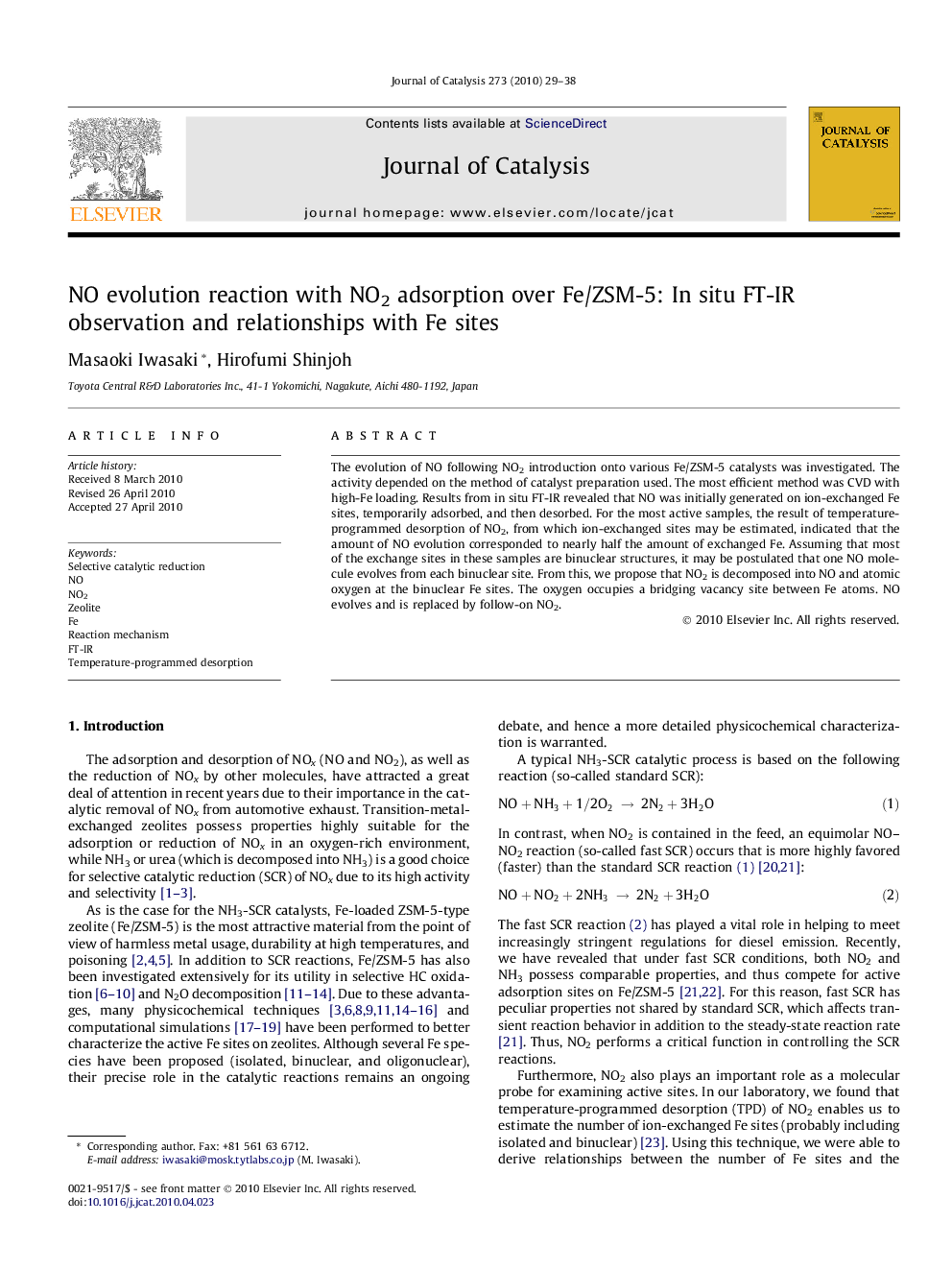| Article ID | Journal | Published Year | Pages | File Type |
|---|---|---|---|---|
| 62278 | Journal of Catalysis | 2010 | 10 Pages |
The evolution of NO following NO2 introduction onto various Fe/ZSM-5 catalysts was investigated. The activity depended on the method of catalyst preparation used. The most efficient method was CVD with high-Fe loading. Results from in situ FT-IR revealed that NO was initially generated on ion-exchanged Fe sites, temporarily adsorbed, and then desorbed. For the most active samples, the result of temperature-programmed desorption of NO2, from which ion-exchanged sites may be estimated, indicated that the amount of NO evolution corresponded to nearly half the amount of exchanged Fe. Assuming that most of the exchange sites in these samples are binuclear structures, it may be postulated that one NO molecule evolves from each binuclear site. From this, we propose that NO2 is decomposed into NO and atomic oxygen at the binuclear Fe sites. The oxygen occupies a bridging vacancy site between Fe atoms. NO evolves and is replaced by follow-on NO2.
Graphical abstractNO2 is decomposed into NO and atomic oxygen at the Fe sites on Fe/ZSM-5 catalyst. NO then evolves and is subsequently replaced by follow-on NO2.Figure optionsDownload full-size imageDownload high-quality image (163 K)Download as PowerPoint slide
